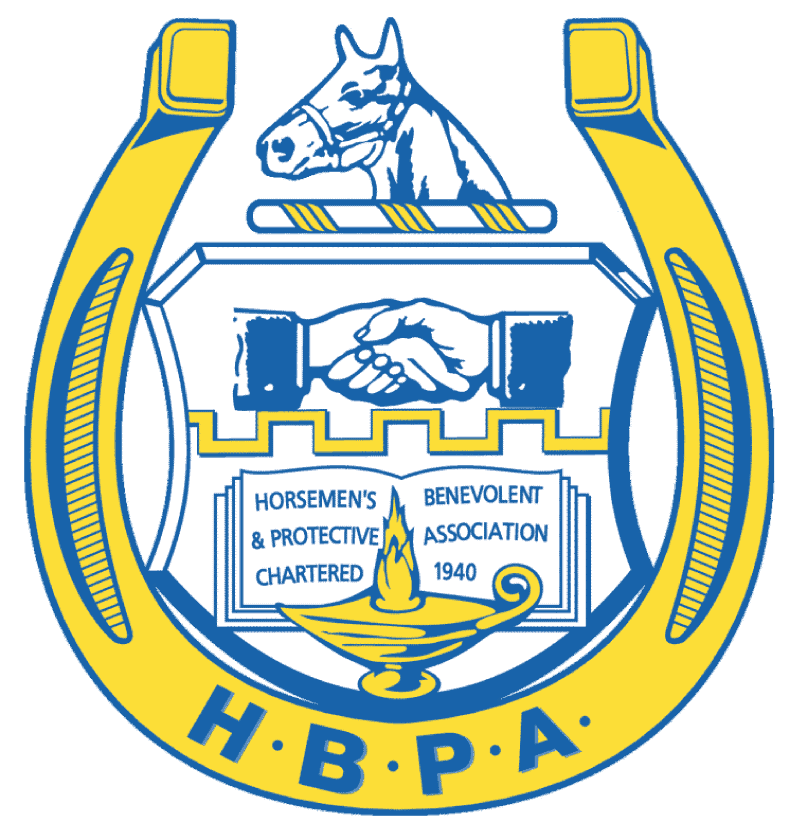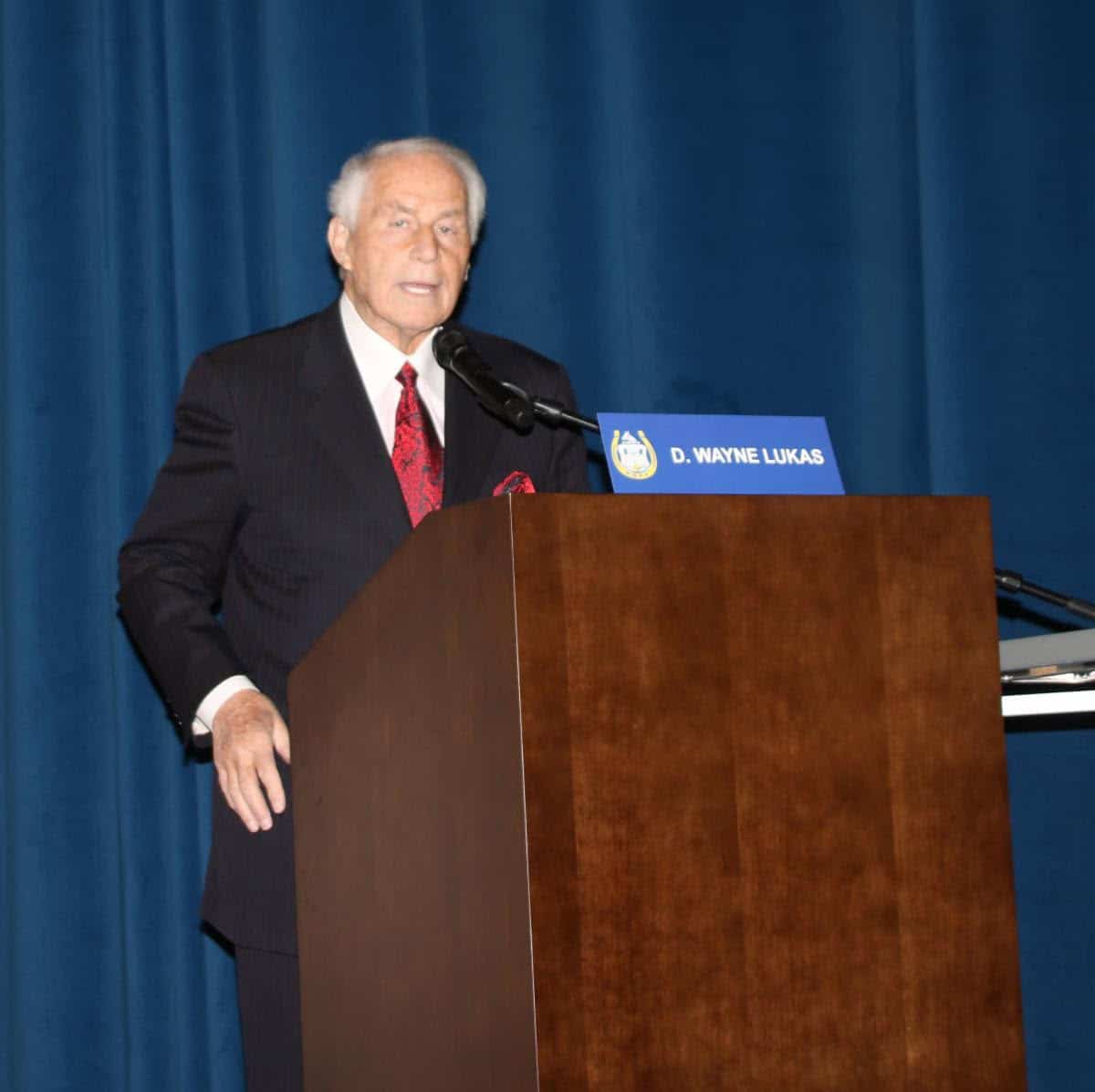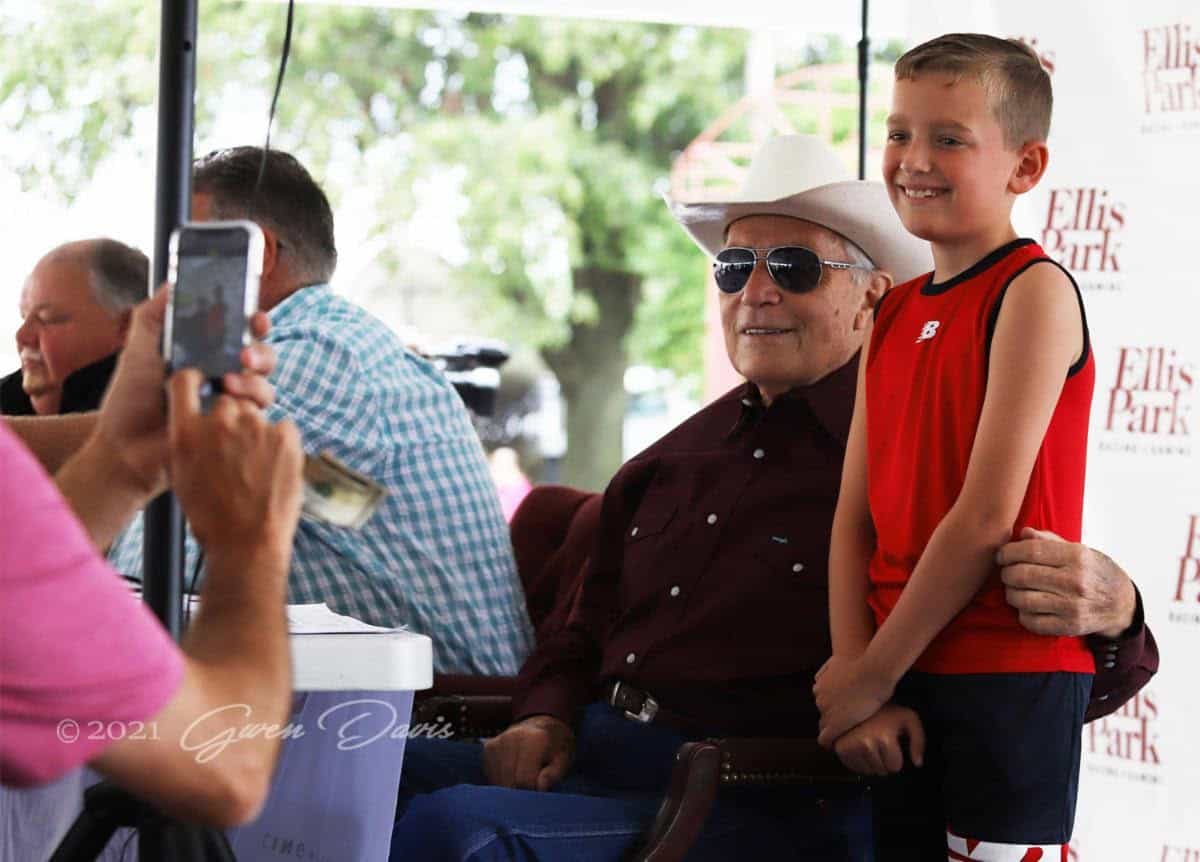ROAP Seeks Regulation of ‘Program Trainers’
Blood-Horse
The Racing Officials Accreditation Program, on its 2015 list of points of emphasis, is encouraging the horse racing industry to develop regulations to deal with the issue of “program trainers”—generally those who serve as cover for suspended or barred individuals.
“On a scale of one to 10, in terms of importance to racing it is right up there,” ROAP chairman Hugh Gallagher said March 30 at one of the early presentations during the organization’s conference in Delaware. “What we’re really looking at here is conspiracy.”
Program trainers have long been an issue in Thoroughbred and Standardbred racing, much to the dismay of horseplayers, but such cases are handled on a track-by-track basis. ROAP officials at the conference reviewed existing state regulations and made recommendations on how to eradicate program trainers.
The recommendations include investigating any person suspected of being a program trainer; develop enforceable penalties and sanctions for rule violations; and ensure that any such trainer, when suspected of being simply a name on the program page, be subject to a regular stewards’ hearing. Owners would be brought into the process as well by being asked if they know who is actually training their horses.
In Delaware, owners must make a trainer transfer. Gallagher, a former executive director of the Delaware Harness Racing Commission who now works for the New York Racing Association, said “many owners” have been denied transfers in Delaware because of information on file with regulators in the state.
“We don’t see a lot of these types of rulings in the database, but the integrity of racing is really on trial here,” Gallagher said. “It really crystallizes down to one thing—accuracy (for the patron). We’re going to get more and more questions asking what we’re doing about this.”
Other recommendations include having stewards investigate the transfer of horses and perhaps interviewing the “new” trainer; analyzing records of horses that ship in from other tracks or may be based at private training centers; and using information regularly gleaned by regulatory licensing staff at each racetrack.
ROAP coordinator Cathy O’Meara said other points of emphasis for racing officials in 2015 include learning about and interacting with other industry initiatives; licensing of those that participate in horse racing; a review of rule violations; examination of catastrophic injuries; and the publishing of detailed stewards’ rulings.
Also on the first day of the two-day conference at the White Clay Country Club on the grounds of Delaware Park, racing investigators and stewards discussed two issues of growing concern: the possession of weapons in racetrack barn areas and public incidents involving violence among stakeholders.
Michael Delaney, a retired Thoroughbred Racing Protective Bureau investigator who now assists the Delaware Thoroughbred Racing Commission during live meets at Delaware Park, said in 2014 there were three cases involving possession of weapons on the backstretch. The state police were called in but took limited action because no warrants had been served.
“This is a disturbing thing we as investigators are finding at racetracks,” Delaney said. “Last summer marked a step toward what I would consider a dangerous environment. I know weapons have been around for a long time, but this isn’t about the trainer who leaves a weapon in the glove box for self-protection. We have people involved in (drug) transactions, and weapons are being used a means to complete those transactions.”
In one of the cases at Delaware Park last year in which a stable employee allegedly pulled a gun on other stable employees while drinking after the races, the weapon wasn’t found but a bill of sale for a 380 automatic was confiscated. In another case, a nine millimeter semi-automatic was found in a sock in a groom’s quarters; the gun was seized and the groom was fined $500.
Delaney suggested the most effective means to curtail such behavior is exclusion from racetrack grounds by the owner of the property. He also said any racetrack that provides on-site housing in its barn area should be aware of what happened in Delaware.
“If you provide housing, you almost certainly have the same problem,” Delaney said. “If you haven’t seen it, you probably haven’t looked for it.”
G. Jack Houghton, chief steward for the DTRC at Delaware Park, said stewards frequently hear about reports of threats made on other people, as well as reports of fights. In a high-profile case last year at Delaware Park, trainer Juan Vazquez was arrested and charged with assault after an altercation with jockey Trevor McCarthy near the winner’s circle in full view of the public.
“It happens all the time with jockeys, but usually in the jockeys’ room,” Houghton said. “It’s the stuff now happening in public that we’re trying to eliminate. People will say, ‘I didn’t come here to watch a boxing match, I came here to watch horse racing.’ I’ve seen a lot of changes in the business, not all for the best. It seems like there is a lot more fighting these days.”
“The stewards took a lot of heat over the Juan Vazquez incident, but we can’t encourage people to take their anger out on someone,” said John Wayne, executive director of the DTRC. “When people do this in public, it gives horse racing a black eye.”





